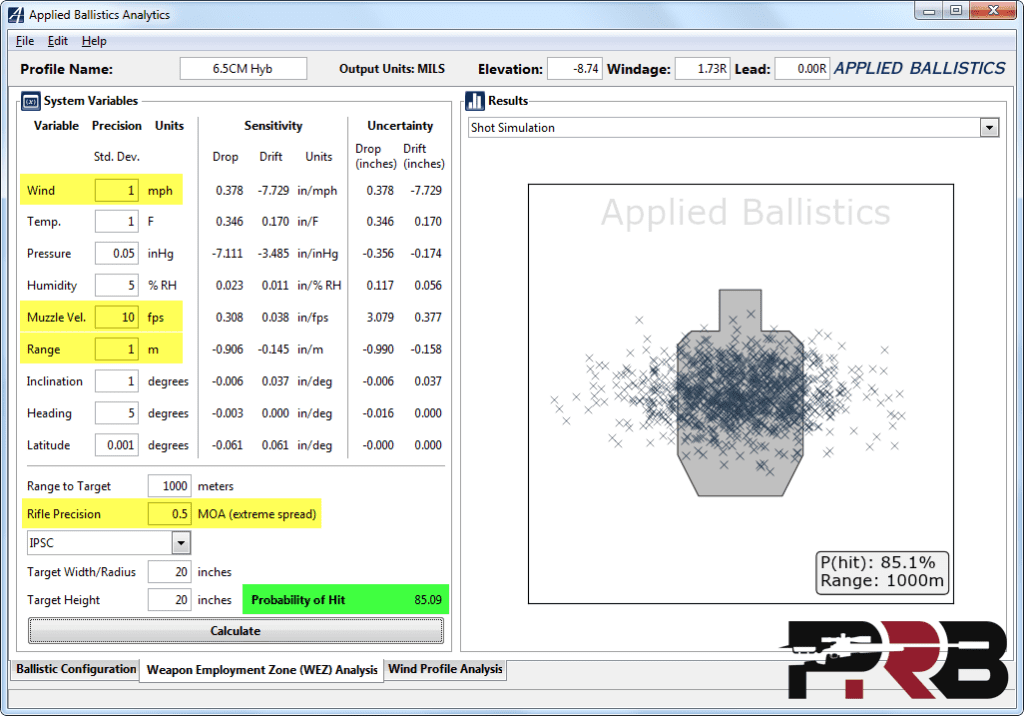But somehow other shooters, with inferior equipment, less practice, and perhaps less than 500 rounds fired at 1000 yards in their lifetime can?
Wow. There's a lot of to unpack here. I'll be charitable and set aside your (very incorrect) assumption on round counts because you're just being silly trying to claim some of us here have fired less than 500 rounds at 1000 yards in our lifetimes

Maybe less than 500 so far this year, but the year is still young. And there are so many yard lines other than the 1000 that I like to shoot at.
Anyways, you are comparing apples and oranges. You're ignoring the aspects of F-Class that makes the discipline different from other shooting sports, and then you're trying to use it to gatekeep ELR when there's very little direct cross over between the two. Every difference in rules matters. Sighters versus spotters is not a trivial thing. You're ignoring the pressure F-Class puts on external ballistics - how it specifically rewards shooting smaller cartridges that do not do as well in the wind as pretty much ANY magnum cartridge. ELR guys get to have one to two teammates with them - a spotter and maybe a wind coach, so they get to divide the mental and physical work loads.
The ideal rifle to make a cold bore hit is not the same one that's the best for jacking 20 rounds in a row into a target. A basic understanding of external ballistics should make that incredibly apparent to everyone.
Are F class shooters shooting the absolute best platform to get first round 1 MOA impact at 1000 yards?
Not anywhere than on the 1000 yard line at an F-Class match

You get sighters and the distance is fixed, so there's very little concern with how much a bullet drops on it's way to the target. The game is horizontal - wind. Any decent ELR rifle is a better platform for first round 1 MOA impact at 1000 yards because they typically shoot heavier, higher-BC bullets, faster. All three of those things shrink the probability cone on a single shot.
Even then (as Lance just proved yet again), shooter knowledge of the particular round being fired matters more than anything other than your wind call. There's a guy who owns a range here in North Texas who has made multiple 1-mile Sub-2MOa cold bore shots with a 223 AI, so something does need to said on the value of repetition and practice!
Or are they shooting the best platform to be able to make the necessary adjustments after their first shots, and then be able to shoot 20 more shots without over fouling and overheating their barrels? This is an honest question.
Yes, that's exactly what they are. That's why actions why actions are short and fat and have separate feed and ejection ports (to balance weight, rigidity, and cycling speed), why the stocks are carefully built to track in bags, why the barrel contours are what they are to meet weight requirements yet be as rigid as possible. It's why the scopes come in 0.05mil and 1/8 MOA - because we actually click the dials instead of changing the hold. One of the many mental tasks going on in your head is looking at the target in the mirage and making sure you're shooting where the target is and not where it isn't. A 20 round string of fire creates barrel mirage on top of surface mirage, even with a shield it causes issues.
It's something you have to do to understand. How can you explain to someone that even though you're shooting at the target you see, that's not where the target actually IS but rather where the light is bending too before it gets to your eye.
I would think a 230 A-tip at 3100FPS would have a much higher first round impact probability, than a 180 hybrid at 2800fps.
It would have a better probability with the range of each variable being held consistent. Wind bracket, range bracket, velocity bracket, BC bracket.
Cal Zandt wrote a 7-part series on how much does each cluster of variables actually matter. The summary in one picture is pretty telling:
As long-range shooters, we tend to obsess over every little detail. After all, we’re trying to hit r...

precisionrifleblog.com
F-Class shortcuts the entire concept of more accurate ranging by giving you sighters. PRS doesn't do that, ELR doesn't do that, hunting doesn't do that, and that's what makes it a very narrowly tailored game of wind reading. It even lets you cheat a little on the wind by giving you sighters on the first relay. Palma does the same thing as F-Class, but triples-down on difficultly be taking away the scope AND rest. Those guys are.... unique.
Better cartridge selection is made much more difficult in F-Class because you have to consider self-spotting, trying to make rapid follow-up shots, and and wanting the gun the track and not require resetting during the course of fire. It favors smaller, non-magnum rounds in general, but rewards guys who can drive bigger rifles. Best 1000-yard 10-shot group ag was shot with a 300 WSM, but mid-range 7s and hot 6s are what you see be competitive in most matches.
If you're at a PRS match and the card says "troop line - 500-600-700 - one shot each out, one shot each back" then you have to 1) laser each target to make sure it's within 30 yards of what the card claims, then 2) mentally update your drops on the way out to run on the way back in. On top of correcting your wind hold bracket and constantly rebuilding your firing position. Kind of makes sense why ~2MOA targets are common in PRS - it would be no fun to make the targets 1/2 MOA and go out and miss every shot because you're running so many variables inside your head every shot while contorting your body


